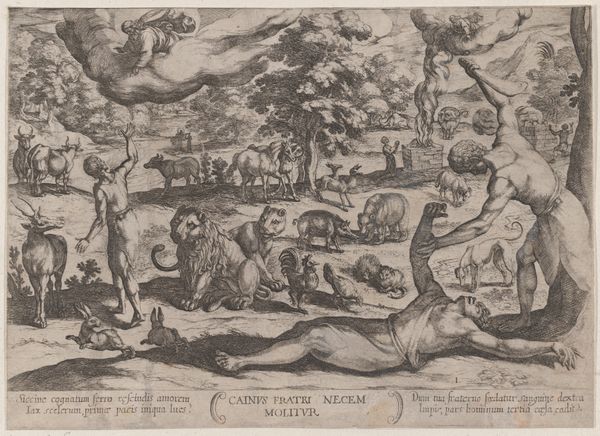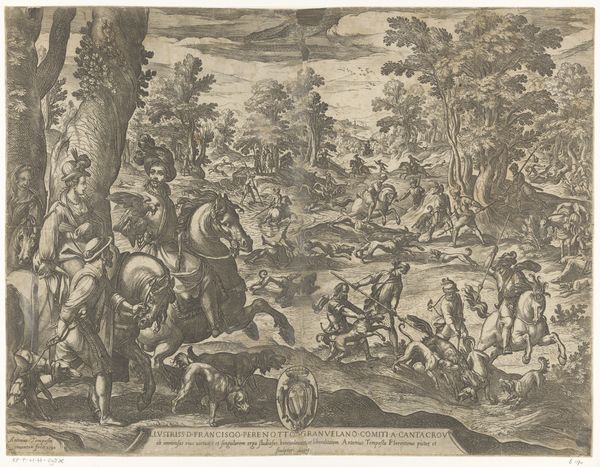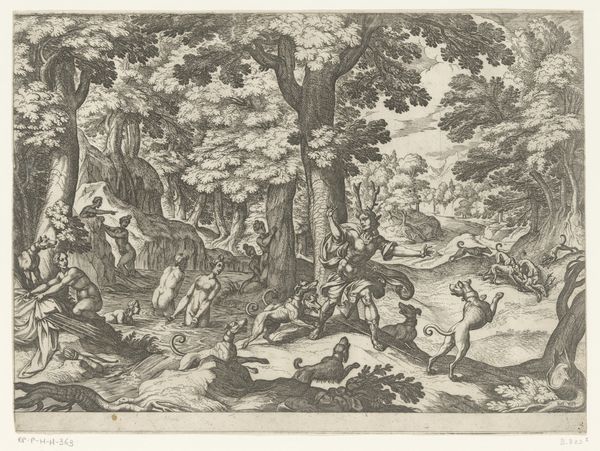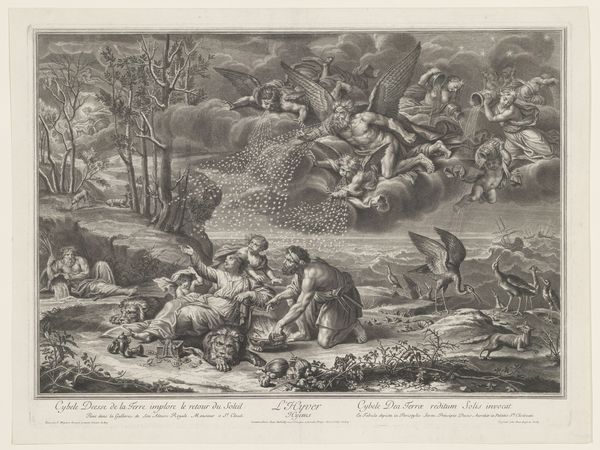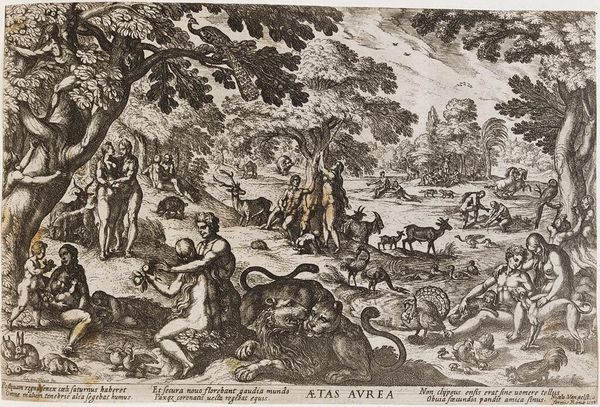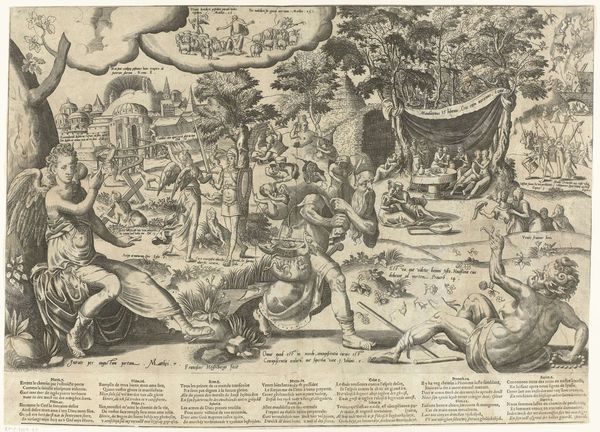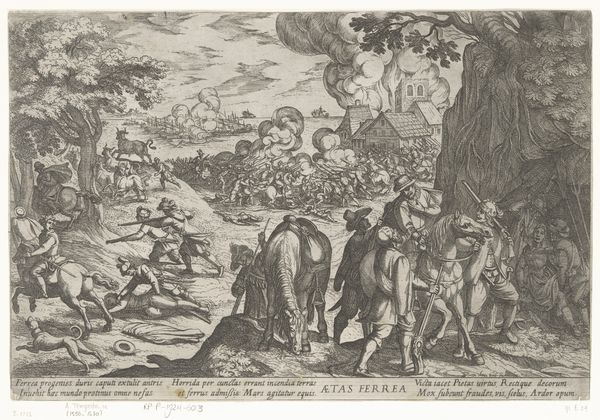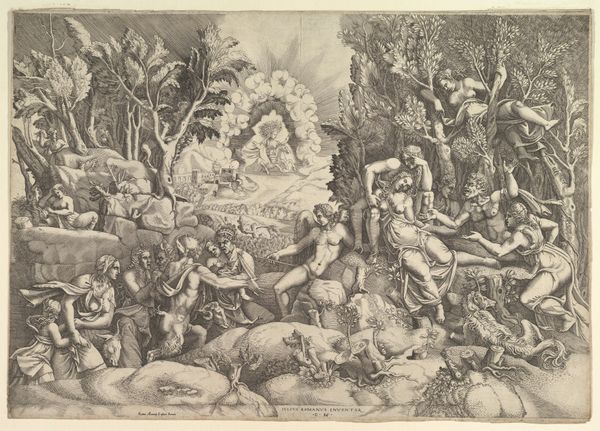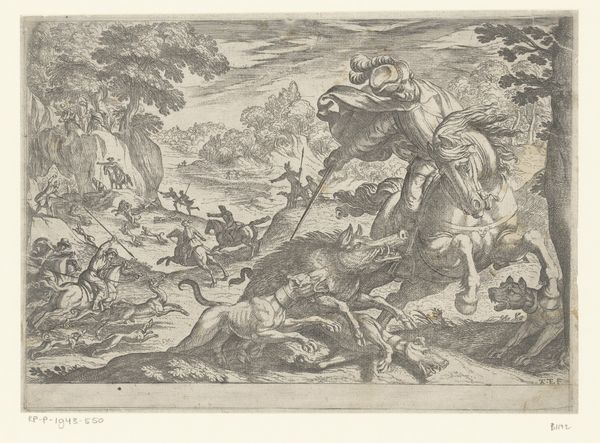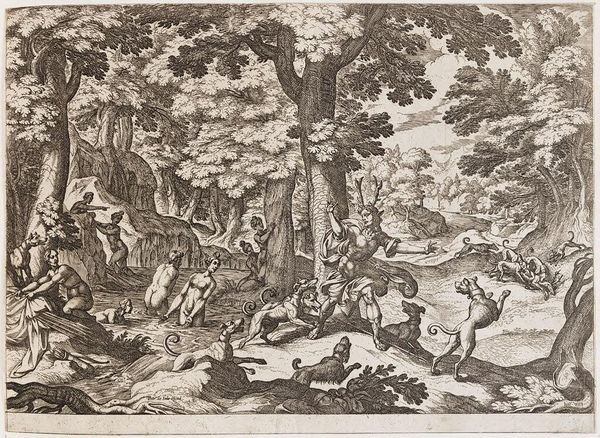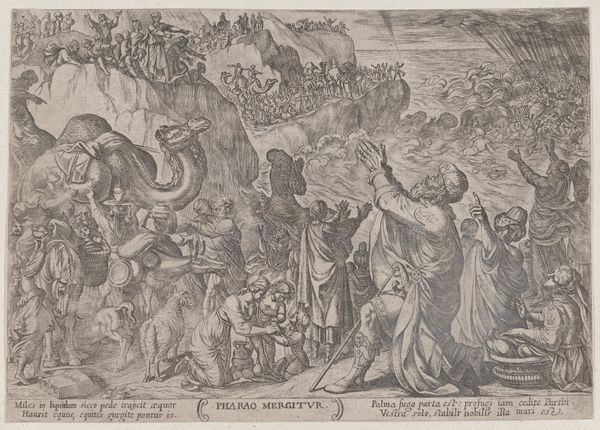
print, etching, engraving
#
narrative-art
#
pen drawing
# print
#
pen illustration
#
etching
#
old engraving style
#
landscape
#
junji ito style
#
figuration
#
11_renaissance
#
classicism
#
genre-painting
#
history-painting
#
academic-art
#
engraving
Dimensions: height 221 mm, width 336 mm
Copyright: Rijks Museum: Open Domain
Editor: We're looking at "Gouden Tijdperk," or "The Golden Age," an etching by Antonio Tempesta, from 1599. The detail is incredible. It almost feels utopian, with all these figures and animals coexisting peacefully. How do you interpret this work? Curator: This print presents a complex, idealized vision. The title, “The Golden Age,” alludes to a mythical past, a time of peace and abundance before the corruption of civilization. Consider the historical context. This was a period marked by religious wars and social upheaval. What do you think this nostalgic depiction offered its viewers? Editor: Maybe an escape? A kind of visual comfort food? Curator: Precisely. But it's crucial to analyze the power dynamics embedded in this "peaceful" image. Who is included and excluded from this idyllic scene? Notice the bodies, their poses, their relationship to nature. How do you see these figures in terms of gender and power? Editor: Now that you mention it, there's a distinct lack of, say, older or disabled figures. Everyone's young and able-bodied. It's a very specific idea of perfection. Curator: Exactly. This ideal often masked the realities of the time, and promoted a specific kind of beauty, prosperity, and dominance. Considering Tempesta's other works, what might this idealized world say about his social standing and the values he embraced, or perhaps, was forced to perpetuate? Editor: I see it differently now. It's less a straightforward depiction of paradise, and more of a statement, maybe even a justification, of a certain social order. Curator: Indeed. By unpacking the underlying assumptions and power structures within this seemingly harmonious image, we can understand how art participated in shaping social norms. It certainly gives you something to think about. Editor: It does. It challenges that initial sense of pure beauty and forces us to look deeper into the artwork's complex meanings and purposes.
Comments
No comments
Be the first to comment and join the conversation on the ultimate creative platform.
